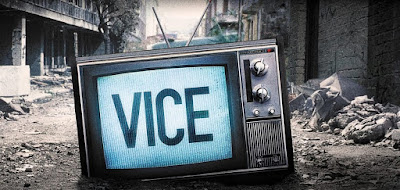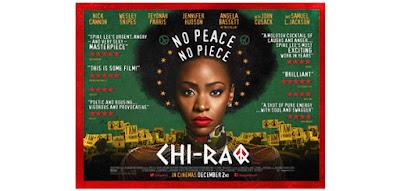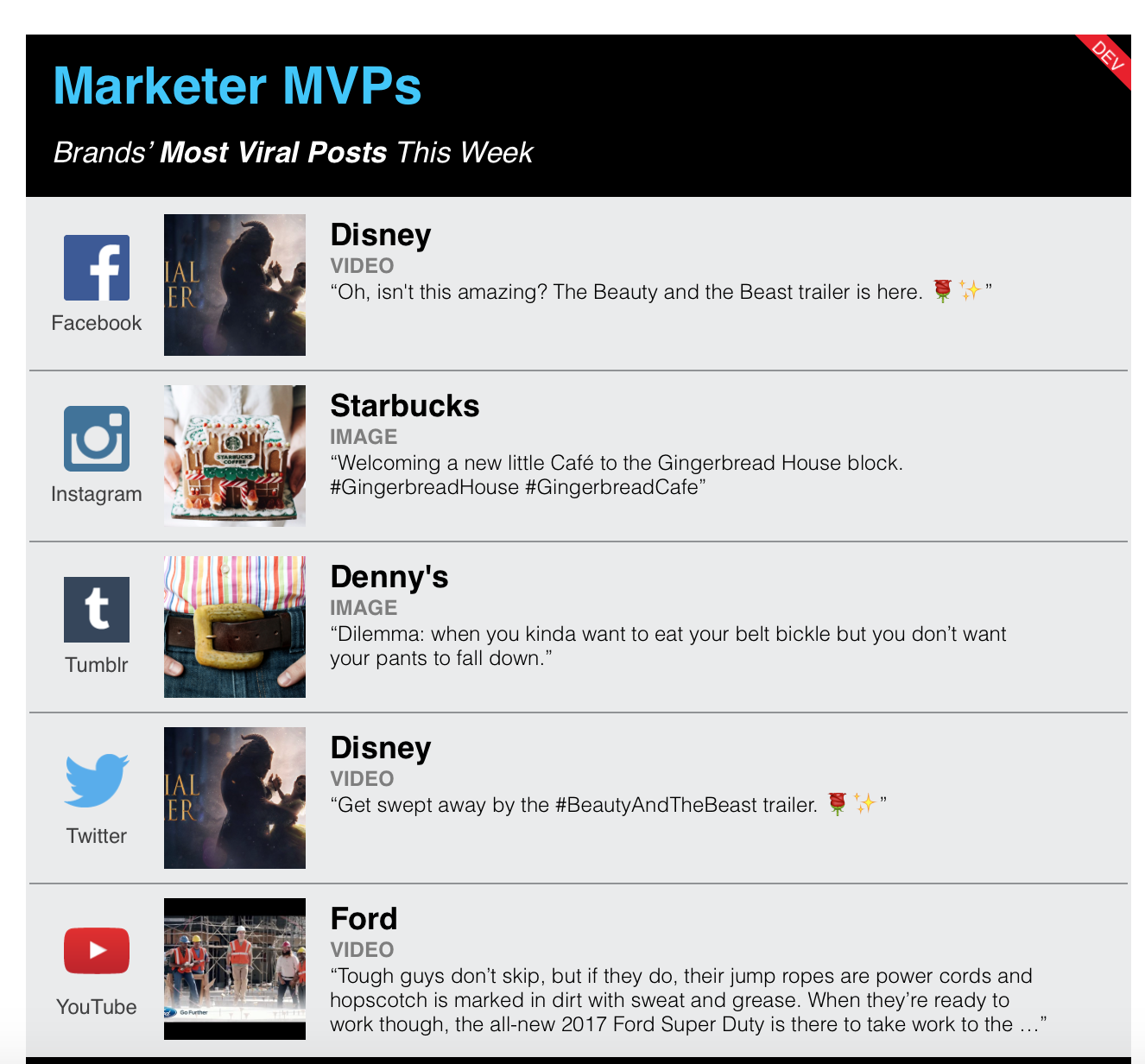Disney: Ownership
This list of 13 properties you may not have known were owned by Disney, whether it be full ownership or a 50 per cent share:
Disney, of course, was founded on family-friendly fare, led by a cartoon mouse. Vice Media was founded largely on counter-culture values in 1994, led by three Canadian punks. But despite Disney’s traditional focus on all that is shiny and happy, and Vice’s focus on truth and disruptive, authentic journalism, Disney’s money trucks pulled up to Vice’s offices late in 2015 and dropped off $400 million for approximately a one-fifth share in the company. One of the results of this deal is that Vice is taking over cable channel H2, rebranding it “Viceland,” which debuts in February 2016.
Toy Story was the first in 1995 and the rest is history. But things got contentious between Disney and Pixar in the late 90s, when Disney refused to include Toy Story 2, which had originally been slated for direct-to-video, in the three-film deal. Plus, Pixar wasn’t happy with being left out of story and sequel rights. Jobs stirred the pot, too, accusing Pixar of looking for other partners. Finally, everyone agreed to a deal when Disney threw $7.4 billion at Pixar, which, incidentally, made Jobs Disney’s largest individual shareholder.
In 2012 when Disney purchased George Lucas’ company, Lucasfilm, for $4.06 billion. Lucasfilm, of course, was Lucas’ production company – but it’s so much more than just a production company that produced such iconic works as the Star Wars and Indiana Jones franchises. When you own Lucasfilm, as Disney does, you also own: Industrial Light and Magic, the award-winning visual effects division; Skywalker Sound for post-production sound design (winners of 18 Academy Awards), and LucasArts Entertainment Company, which created dozens of Star Wars and other games over the years, but was all but dissolved after the acquisition, resulting in many layoffs (Electronic Arts now develops Star Wars games, such as the recent Battlefront).
Disney bought Marvel for $4 billion. Marvel was known for comics that put somewhat realistic, everyman characters into extraordinary circumstances, filled with grey areas between good and evil. Fortunately, the company has only gotten stronger since the acquisition. The Marvel Cinematic Universe (MCU) is an absolute juggernaut, basking in critical and audience approval. The Civil War plotline we’re about to see, starting with this spring’s Captain America: Civil War, is proof that Disney is not shying away from those grey areas, with characters we know as “good guys” being pitted against each other.
As early as the ’80s, Disney wanted to get its hands on the Muppets characters, but Henson and his heirs wouldn’t budge, even after his death in 1990. However, Disney did co-produce a couple of Muppets films in the early 90s (The Muppet Christmas Carol and Muppet Treasure Island), setting the stage for Disney to finally take full control over the Muppets with the acquisition in 2004. This has led to a couple of successful new movies and a new prime-time TV show, which debuted in September 2015. And, of course, the characters have been incorporated into Disney theme parks.
Disney had their hands on ABC from very early on. Walt Disney himself asked ABC to help fund the building of Disneyland, in exchange for a weekly Sunday night show called Disneyland, and the network even broadcast the opening of the park live in 1955. Soon after, ABC aired the original iconic The Mickey Mouse Club. But by 1961, the relationship had already ended, and it would take 24 years for them to air Disney fare again. Finally, in 1996 Disney bought the company. After some rocky times with unsuccessful new shows, there were reports in 2010 that Disney was trying to sell the network, but failed. These days, despite hot shows like Modern Family, Grey’s Anatomy, Scandal and How to Get Away with Murder, ABC was still ranked third among the networks, as of September 2015.
Since its inception in 1989, Hollywood Records has always been a Disney property, it just didn’t necessarily flaunt the Disney brand. At first, it just released soundtracks for Disney films (including Touchstone and Hollywood Pictures films). There were some rocky roads in the early going, as they tried and failed to sign early-90s grunge and hip hop acts like Nirvana and Dr. Dre, but the acquisition of Queen’s catalogue gave them a boost. At last, they discovered a gold mine in the young stars of Disney children’s shows. Hillary Duff was the label’s first big star in 2003, and they used the same model for the likes of Miley Cyrus, Demi Lovato and Selena Gomez. While still releasing movie soundtracks, Hollywood Records has also managed to snag some grittier talent to join the ranks of bubble-gum pop stars, including Grace Potter and the Nocturnals and Breaking Benjamin.
It was the purchase of ESPN by the ABC network in 1984 that put them over the top, because that allowed them to go after major sports and get big-time ratings. And when Disney bought ABC in 1996, ESPN came along with it. And it’s proven itself to be a major cash cow for the company. The ABC deal cost Mickey and company $19 billion. As of 2014, ESPN alone was worth over $50 billion.
Disney half-owns this cable channel, along with the Hearst Corporation. It first popped up in 1984, available in 9.3 million homes. But, interestingly, it was only available after 9:00 pm.
Lifetime joined the Disney family in 2009, when A&E (co-owned by Disney and Hearst) acquired it. Under Disney, it’s still known for the Lifetime movies, along with reality shows like Dance Moms, a few scripted programs and reruns of old network shows. They even satirized their own movies with the 2015 broadcast of A Deadly Adoption, starring comedy superstars Will Ferrell and Kristin Wiig. It was played straight, but the satire came from the stars’ hilarious reputations.
Ever since A&E Networks launched what was then called The History Channel in 1995, it’s been fairly successful. It was a little more than a year later that 50 per cent of it fell under the Disney umbrella, with Disney’s acquisition of ABC (which included A&E Networks). Like A&E and Lifetime, the other 50 per cent is owned by Hearst. Not surprisingly, History was originally known for airing historical documentary and scripted programs.
Maker Studios was founded in 2009, mostly by a group of YouTube stars, including Lisa Donovan, Kassem G, Shay Carl and Philip DeFranco, along with former CEO Danny Zappin. It’s a multi-channel YouTube network that produces some of the most-watched videos on the Internet. Little more than five years later, the company was a major hit and Disney bought it for somewhere between $500-$950 million (depending on financial milestones being met). But even before the acquisition, Zappin resigned when his decidedly un-Disney-like rap sheet came to light, having been convicted of felony drug possession in 2001.
13. HONORABLE MENTION: VICE MEDIA
12. PIXAR
11. LUCASFILM
10. MARVEL ENTERTAINMENT
9. TOUCHSTONE PICTURES
Back in the late ‘70s and early ‘80s, Disney was having trouble appealing to teens and adults. So they developed the Touchstone Films (later renamed Touchstone Pictures) label in 1984 – and it paid off in a big way.
8. THE MUPPETS
7. AMERICAN BROADCASTING COMPANY (ABC)
6. HOLLYWOOD RECORDS
5. ESPN
4. A&E
3. LIFETIME
2. HISTORY
Ever since A&E Networks launched what was then called The History Channel in 1995, it’s been fairly successful. It was a little more than a year later that 50 per cent of it fell under the Disney umbrella, with Disney’s acquisition of ABC (which included A&E Networks). Like A&E and Lifetime, the other 50 per cent is owned by Hearst. Not surprisingly, History was originally known for airing historical documentary and scripted programs.
1. MAKER STUDIOS
Maker Studios was founded in 2009, mostly by a group of YouTube stars, including Lisa Donovan, Kassem G, Shay Carl and Philip DeFranco, along with former CEO Danny Zappin. It’s a multi-channel YouTube network that produces some of the most-watched videos on the Internet. Little more than five years later, the company was a major hit and Disney bought it for somewhere between $500-$950 million (depending on financial milestones being met). But even before the acquisition, Zappin resigned when his decidedly un-Disney-like rap sheet came to light, having been convicted of felony drug possession in 2001.
Sum Up:
Disney Bought
- Vice Media for $400 million
- Pixar for $7.4 billion
- LucasFilm for $4.06 billion.
- Marvel for $4 billion
- Maker Studios for somewhere between $500-$950 million
Dinsey Obtained/ Developed
- Vice Media in 2015
- Pixar in 2006
- LucasFilm in 2012
- Marvel in 2009
- Touchstone in 1984
- The Muppets in 2004
- ABC in 1996
- Hollywood Records in 1989
- ESPN in 1996
- A & E in 1984
- Lifetime in 2009
- History in 1996
- Maker Studios in 2014
















Comments
Post a Comment